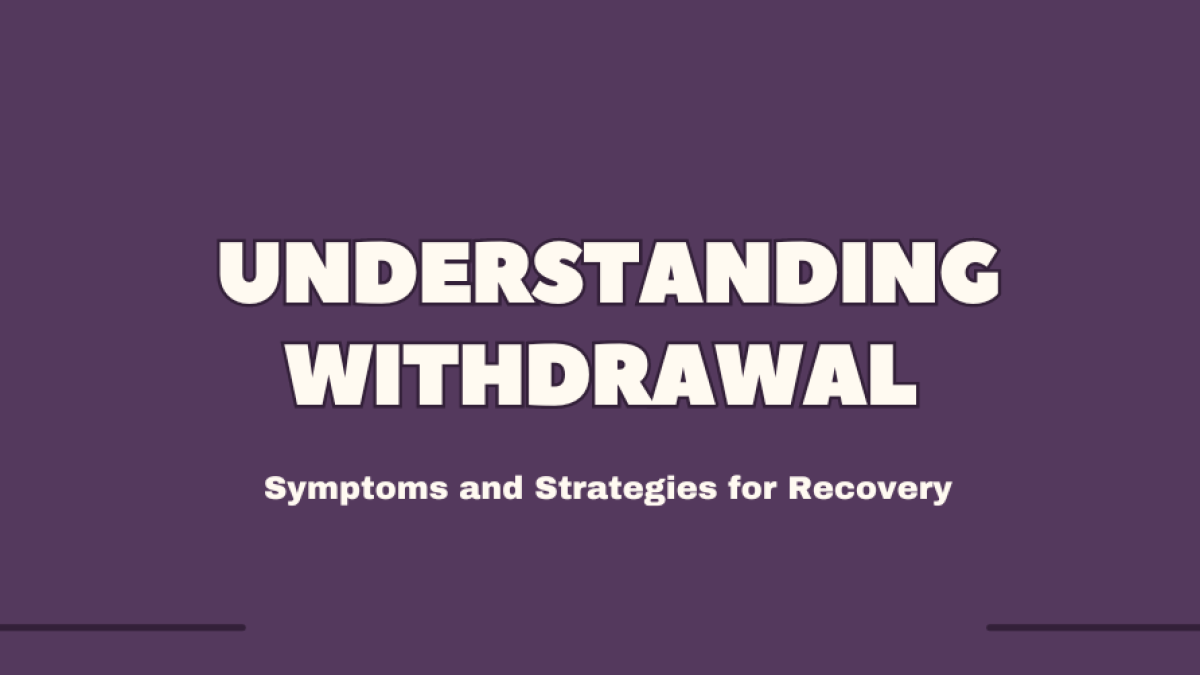Understanding Withdrawal in Ultra-Processed Food Addiction: Symptoms and Strategies for Recovery

Learn about withdrawal in ultra-processed food addiction, its symptoms, and effective strategies to manage this challenging phase of recovery.
Understanding Withdrawal in Ultra-Processed Food Addiction: Symptoms and Strategies for Recovery
When we think of addiction, the concept of withdrawal often comes to mind, typically associated with substances like drugs or alcohol. However, withdrawal can also occur with Ultra-Processed Food Addiction. While food addiction may seem less severe than other types of addiction, the physical and emotional symptoms that come with withdrawing from ultra-processed foods can be surprisingly intense. In this blog, we’ll dive into what withdrawal from Ultra-Processed Food Addiction looks like, common symptoms, and strategies to overcome this challenging phase in your recovery journey.
What Is Withdrawal in Ultra-Processed Food Addiction?
Withdrawal refers to the physical and psychological symptoms when you suddenly reduce or stop consuming ultra-processed foods. These foods are often high in sugar, unhealthy fats, and artificial additives, which can create powerful cravings and dependencies. Over time, your body and brain become accustomed to these foods, making it difficult to function without them.
When you try to cut back on or eliminate ultra-processed foods, your body goes through a period of adjustment, resulting in withdrawal symptoms. These hyper-palatable foods have overstimulated your brain’s reward system, and removing them creates a void that the brain must adapt to.
Common Withdrawal Symptoms
Just like with any addiction, withdrawal from ultra-processed foods can manifest through various physical and psychological symptoms. Here are some common signs you might experience:
1. Cravings: One of the most common withdrawal symptoms is intense cravings for ultra-processed foods, especially sugary or salty snacks. These cravings can feel overwhelming, making it hard to resist the temptation to revert to old eating habits.
2. Mood Swings and Irritability: Cutting back on ultra-processed foods can lead to emotional changes, including irritability, frustration, or anger. This is often a result of the brain adjusting to the reduced dopamine release that these foods used to trigger.
3. Fatigue and Low Energy: Many people experience low energy levels during the early stages of withdrawal. Ultra-processed foods, due to their high sugar content, provide quick bursts of energy, so when you stop eating them, you may feel sluggish or tired as your body adjusts.
4. Headaches: Sugar withdrawal, in particular, can lead to headaches as the body adapts to lower sugar levels in the system.
5. Digestive Issues: As your body adjusts to a healthier diet that includes more whole foods and fiber, you might experience digestive discomfort, including bloating, constipation, or diarrhea.
6. Anxiety and Depression: The emotional toll of withdrawal can lead to feelings of anxiety, sadness, or even mild depression. This is a normal process as your brain recalibrates its reward system.
7. Difficulty Concentrating: Mental fog or trouble focusing can occur as your body adjusts to the absence of the quick energy spikes from ultra-processed foods.
Why Does Withdrawal Happen?
The withdrawal symptoms associated with Ultra-Processed Food Addiction are primarily due to the way these foods affect the brain. Ultra-processed foods, significantly high in sugar and fat, stimulate the release of dopamine in the brain, a neurotransmitter that creates feelings of pleasure and reward. Over time, the brain becomes dependent on this dopamine release, similar to how it would react to other addictive substances.
When you stop eating ultra-processed foods, your brain is suddenly deprived of that dopamine boost, leading to withdrawal symptoms as it struggles to return to normal dopamine levels. Additionally, your body is used to the quick energy that ultra-processed foods provide, which leads to physical symptoms like fatigue and headaches when those foods are no longer present.
How to Manage Withdrawal Symptoms
While withdrawal from ultra-processed foods can be difficult, it’s important to remember that the symptoms are temporary. Here are some strategies to help you navigate this challenging period:
1. Stay Hydrated: Drinking plenty of water can help flush out toxins from your body and may reduce the intensity of some withdrawal symptoms, like headaches and fatigue. Staying hydrated also helps regulate digestion and supports overall health. You may want to try electrolytes in your water to maintain energy levels and reduce the risk of headaches and nausea.
2. Eat Low-Exposure Foods: Eat whole, unprocessed foods that provide balanced nutrition, including fresh fruits, vegetables, whole grains, and lean proteins. These foods help stabilize your blood sugar levels and provide sustained energy, which can reduce cravings and fatigue.
3. Incorporate Healthy Fats and Proteins: Including healthy fats (such as avocados, nuts, and olive oil) and proteins (such as eggs, beans, and chicken) in your meals can help you feel fuller for longer and provide essential nutrients, which may reduce cravings for ultra-processed foods.
4. Gradual Reduction vs. Cold Turkey: For some people, quitting ultra-processed foods all at once (cold turkey) may trigger more severe withdrawal symptoms. If quitting cold turkey feels overwhelming, consider gradually reducing your intake of these foods. This approach can give your body time to adjust without triggering extreme cravings or mood swings.
5. Practice Mindful Eating: Mindful eating helps you become more aware of what and why you eat. Paying attention to your hunger cues, savoring each bite, and noticing how you feel after eating can reduce mindless snacking on ultra-processed foods and make the transition easier.
6. Stay Active: Physical activity, even light exercise like walking, can improve mood, reduce stress, and increase energy levels, helping ease withdrawal symptoms. Exercise also triggers the release of endorphins, which can counterbalance the lack of dopamine from ultra-processed foods.
7. Get Plenty of Rest: Withdrawal can be taxing on your body, so prioritize sleep and rest. Quality sleep will help your body repair and restore during this adjustment period.
8. Seek Support: Whether from friends, family, or a professional, having support during withdrawal is crucial. Sharing your challenges with others can reduce isolation and encourage you to stay on track.
The Importance of Patience and Persistence
Withdrawal symptoms from ultra-processed foods may last from a few days to a few weeks, depending on the person and their consumption habits. It’s important to remember that this phase is temporary, and the benefits of overcoming Ultra-Processed Food Addiction far outweigh the short-term discomfort. Once you get past the withdrawal stage, you can achieve improved energy levels, mental clarity, better digestion, and a sense of control over your eating habits.
Conclusion
Withdrawal from Ultra-Processed Food Addiction can be a challenging and uncomfortable process, but it’s also an essential step toward breaking free from the cycle of dependency on unhealthy foods. By recognizing the symptoms, understanding why they occur, and using the strategies outlined above, you can navigate this phase with greater ease and begin to reclaim control over your health and well-being. Remember, persistence is critical—each day without ultra-processed foods is a victory toward a healthier, sweeter life.
Categories: : Carb Addiction, Cravings, Food Addiction, Recovery, Sugar Addiction, Ultra-Processed Food Addiction, Withdrawal
 Molly Painschab
Molly Painschab 